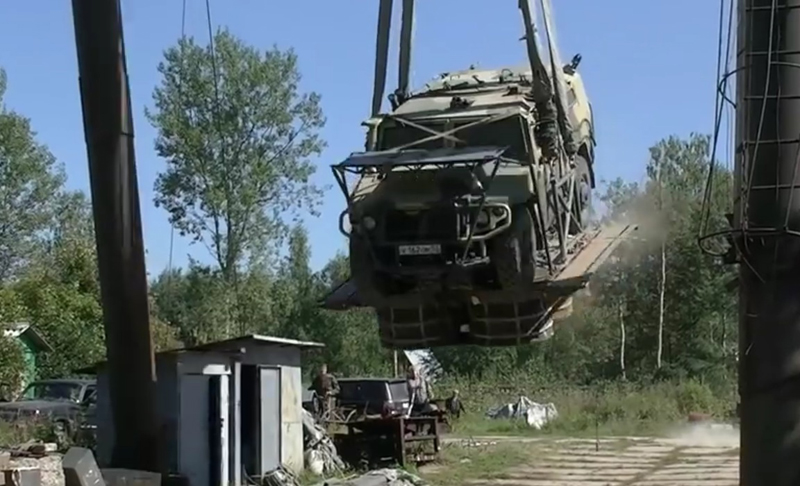The Russian Airborne Troops will soon receive an upgraded version of the Tigr all-terrain infantry mobility vehicle. Tests of the new version are currently carrying out.

Photo: YouTube / TASS
The Russian Airborne Troops (VDV) will soon receive an upgraded version of the Tigr all-terrain infantry mobility vehicle, the TASS news agency reported on Wednesday. According to the Head of Media Relations of the Military Industrial Company (VPK LLC), Sergei Suvorov, tests of the new version are currently holding.
“The Tigr is planned to be airborne. Tests are already underway. The fall hammer tests [throwing the vehicle from a special tower that simulates landing] have already been carried out. A platform revision is currently holding,” Sergei Suvorov said.
TASS has got footage of the vehicle’s fall hammer tests. The video shows a successful landing of the Tigr after the throw from a height of about 5 meters.
The GAZ Tigr (Russian: Тигр and English: Tiger) is a Russian 4×4, multipurpose, all-terrain infantry mobility vehicle manufactured by GAZ, first delivered to the Russian Army in 2006. Primarily used by the Russian Federation’s armed forces, it is also used by numerous other countries and organizations.
The Tigr was first shown as the IDEX exhibition in 2001. Pilot production started in 2004 with 96 vehicles. The Russian Army officially adopted the GAZ-2975 into service at the end of 2006. The vehicle was then officially manufactured in 2007.
The vehicle was designed to transport troops and various equipment quickly on road and off-road. It has a chassis frame construction, with a traditional layout of front engine, middle crew compartment, and rear cargo area. Standard features include: power steering, independent all-wheel torsion suspension with hydraulic shock absorbers and stabilizer bars, a transfer case with a locking center differential, limited slip differentials, two-speed transfer case, automatic tire inflation, engine block heater, and electric winch.
The GAZ-233001 has optional air conditioning, stereo, electric windows, and an anti-lock braking system.
Armored versions of the Tigr feature 5 mm (0.20 in) (7 mm (0.28 in) for the SPM-2) heat-treated and stress-relieved armor plates. The Tigr can carry a half ton of cargo.
The available engines are a Cummins 5.9 L (360 cu in) B180 turbodiesel with 180 hp (130 kW); a Cummins 5.9 L (360 cu in) B205 turbodiesel producing 180 hp (130 kW); a Cummins 5.9 L (360 cu in) B-214 turbodiesel making 215 hp (160 kW); or a GAZ-562 3.2 L (200 cu in) turbodiesel with 197 hp (147 kW).
Designed for performance in mountain, arctic, and desert environments, the Tigr is capable of operating at ambient temperatures ranging from −14–50 °C (7–122 °F). Moreover, the vehicle has approach and departure angles of 52 degrees and a wading depth of 1.2 m (3.9 ft).





